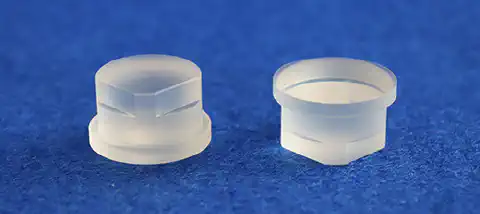
Freeform optics in radio astronomy
Reference project
High-resolution freeforms installed in compact satellites to analyze radio frequency signals
Alongside visible light, radio waves can also be used to study celestial objects and cosmic phenomena. Radio astronomy offers insights into stars, gas clouds, and other cosmic structures emitting at radio frequencies. ANSER is a CubeSat mission designed to capture and relay high-definition images and data of our Earth’s surface derived from radio waves. The responsibility for crafting two high-precision freeform optics from Zerodur for these compact satellites was taken up by asphericon.
Project overview
Undertaken by INTA (the Spanish National Institute of Aerospace Technology), the CubeSat mission ANSER (Advanced Nanosatellite for Space Exploration and Radio Astronomy) stands as a trailblazer in space exploration and radio astronomy. ANSER utilizes CubeSats – very small cube-shaped satellites in standard sizes. Their standardization and diminutive size enable cost-effective development and space deployment. These CubeSats, equipped with cutting-edge radio telescopes and receivers, are primed to study cosmic phenomena and celestial entities emitting radio waves. Since the Earth’s atmosphere partially blocks radio radiation from space, ANSER paves the way for clearer, more detailed observations. Another pivotal application is terrestrial observation. The CubeSats can capture and transmit high-definition images and data of the Earth’s terrain. This data holds immense potential for sectors like environmental monitoring, disaster response, and agriculture. Owing to the CubeSats’ compact nature and cost efficiency, ANSER opens up new possibilities for space exploration.
Scheduled for a September 2023 launch, the initiative involves a cluster of three nanosatellites. Their objective is to assess water quality in reservoirs and wetlands across the Iberian Peninsula. The satellites will fly in close formation about 10 km apart and work together as a single satellite. The payload will be shared among the three CubeSats. Distributed attitude control will be used to negate any misalignment and ensure none of the satellites is lost.
Project execution
The satellites’ compact design calls for a very small optical system to match. Instead of functioning on-axis, it operates at two symmetrical points outside its viewing range. Given the need for a broad field of view despite component miniaturization, resorting to purely spherical or aspherical optics wasn’t an option. This is where asphericon stepped in, producing two high-resolution free-form optics crafted from Zerodur. These optics satisfied both system size and surface quality requirements. Operating within a 400 to 750 nm spectral range, each optic has a diameter of 18.4 mm. Creating these freeforms posed a challenge, particularly the low irregularities necessary (target IRR: 1.5 fr). Nevertheless, this challenge was surmounted thanks to the MRF polishing method coupled with asphericon’s vast experience in freeform production. A unique sub-aperture polishing methodology was devised, including tailored programming for tool traversal along the freeform surface. Pairing this with advanced 2D measurement technology and an automated correction algorithm led to better irregularities than required (IRR ranging between 0.8 and 1.0 fr) and impressive results in terms of power (0.3–0.6 fr) and surface roughness (Rq 0.7–1.3 nm).
Geometric description of the freeform optics and specification

- Material: Zerodur
- Diameter: 18.4 mm
- Tc: 14 mm with edge contour used for adjustment in small Cassegrain telescopes
- Power (0.3–0.6 fr) and IRR (0.8–1.0 fr) measurements obtained and verified using 2D full-area measurement with optical probes
- Rq: 0.7–1.3 nm
- Figure on the left shows manufactured optics
Optics for INTA at a glance
- Production of two freeform optics for use in the spectral range of 400–750 nm.
- Freeform surfaces with base radius, conical constant and Zernike terms up to the 9th order
- Development of a special sub-aperture polishing technique and combination of high-resolution 2D measuring technology with an automated correction algorithm for manufacturing and measuring high-resolution optical surfaces

